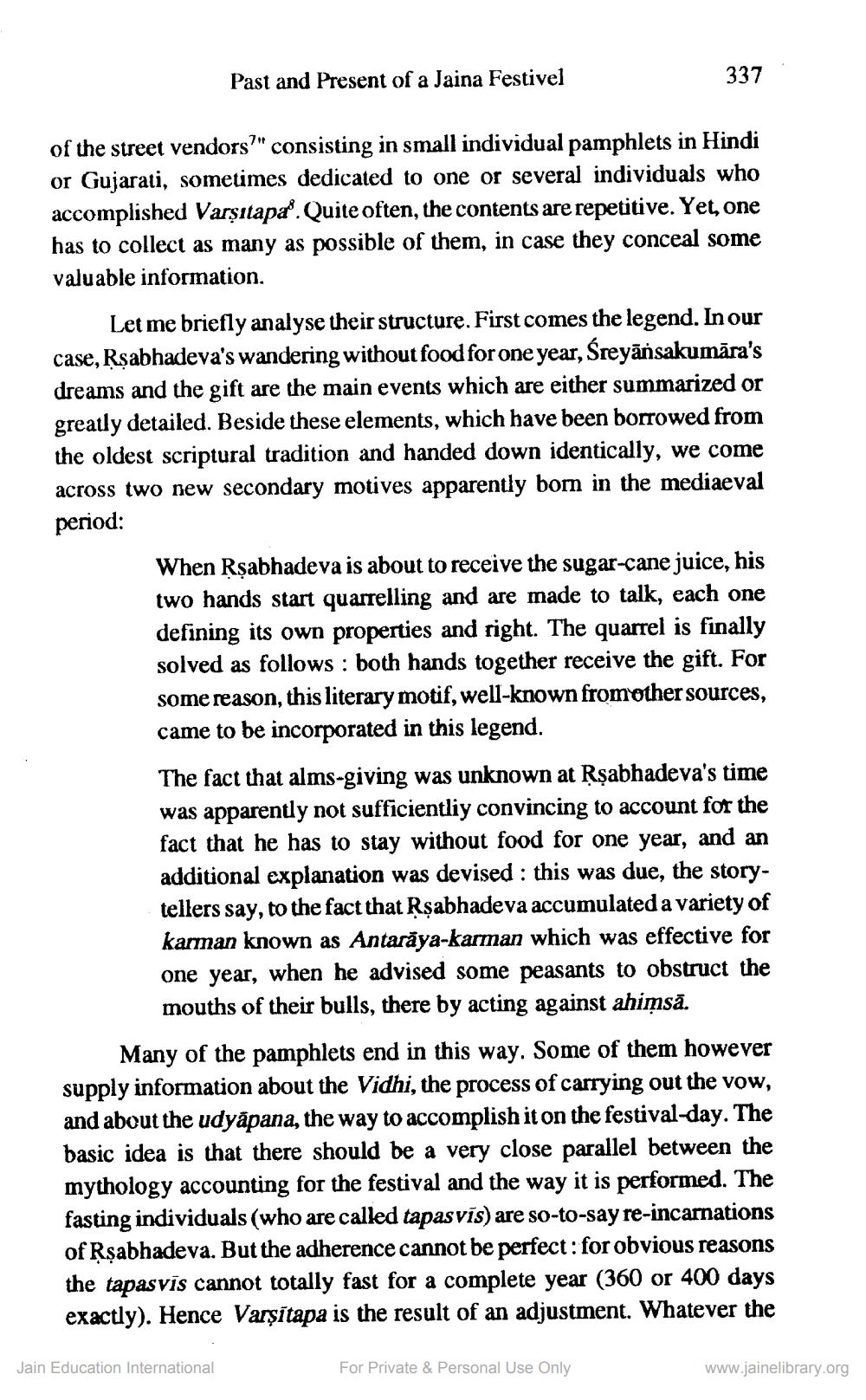________________
Past and Present of a Jaina Festivel
337
of the street vendors?" consisting in small individual pamphlets in Hindi or Gujarati, sometimes dedicated to one or several individuals who accomplished Varșitapa. Quite often, the contents are repetitive. Yet, one has to collect as many as possible of them, in case they conceal some valuable information.
Let me briefly analyse their structure. First comes the legend. In our case, Rşabhadeva's wandering without food for one year, Śreyānsakumāra's dreams and the gift are the main events which are either summarized or greatly detailed. Beside these elements, which have been borrowed from the oldest scriptural tradition and handed down identically, we come across two new secondary motives apparently born in the mediaeval
period:
When Rşabhadeva is about to receive the sugar-cane juice, his two hands start quarrelling and are made to talk, each one defining its own properties and right. The quarrel is finally solved as follows : both hands together receive the gift. For some reason, this literary motif, well-known fromother sources, came to be incorporated in this legend. The fact that alms-giving was unknown at Rşabhadeva's time was apparently not sufficientliy convincing to account for the fact that he has to stay without food for one year, and an additional explanation was devised : this was due, the storytellers say, to the fact that Rşabhadeva accumulated a variety of karman known as Antarăya-karman which was effective for one year, when he advised some peasants to obstruct the
mouths of their bulls, there by acting against ahimsā. Many of the pamphlets end in this way. Some of them however supply information about the Vidhi, the process of carrying out the vow, and about the udyapana, the way to accomplish it on the festival-day. The basic idea is that there should be a very close parallel between the mythology accounting for the festival and the way it is performed. The fasting individuals (who are called tapasvīs) are so-to-say re-incarnations of Rşabhadeva. But the adherence cannot be perfect: for obvious reasons the tapasvis cannot totally fast for a complete year (360 or 400 days exactly). Hence Varșītapa is the result of an adjustment. Whatever the
Jain Education International
For Private & Personal Use Only
www.jainelibrary.org




